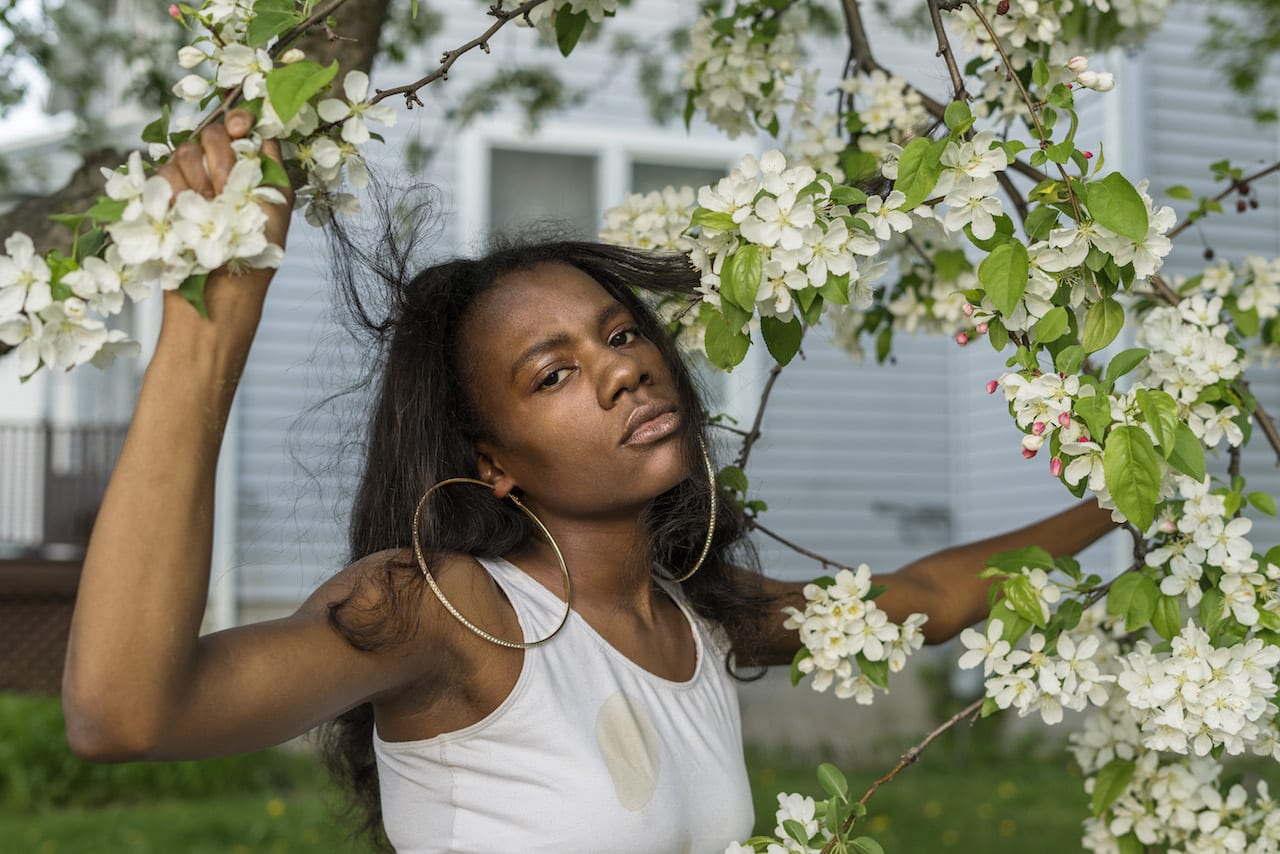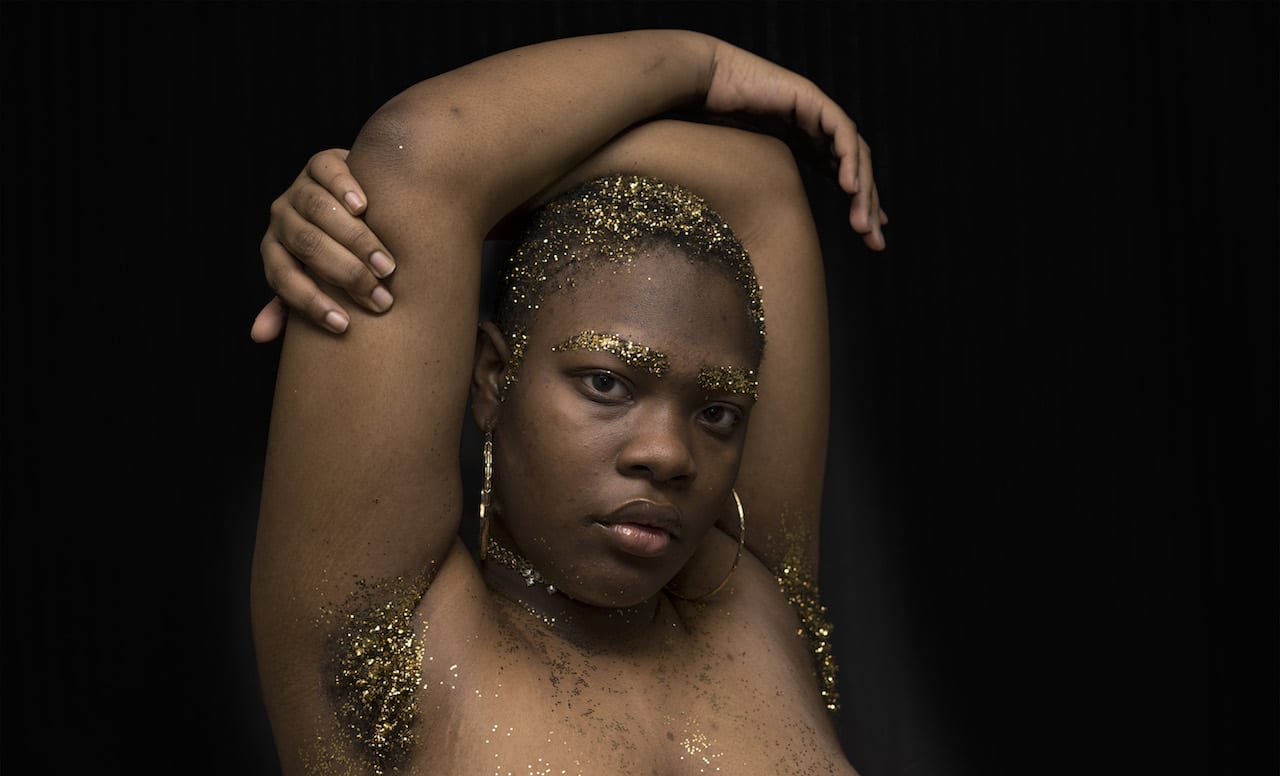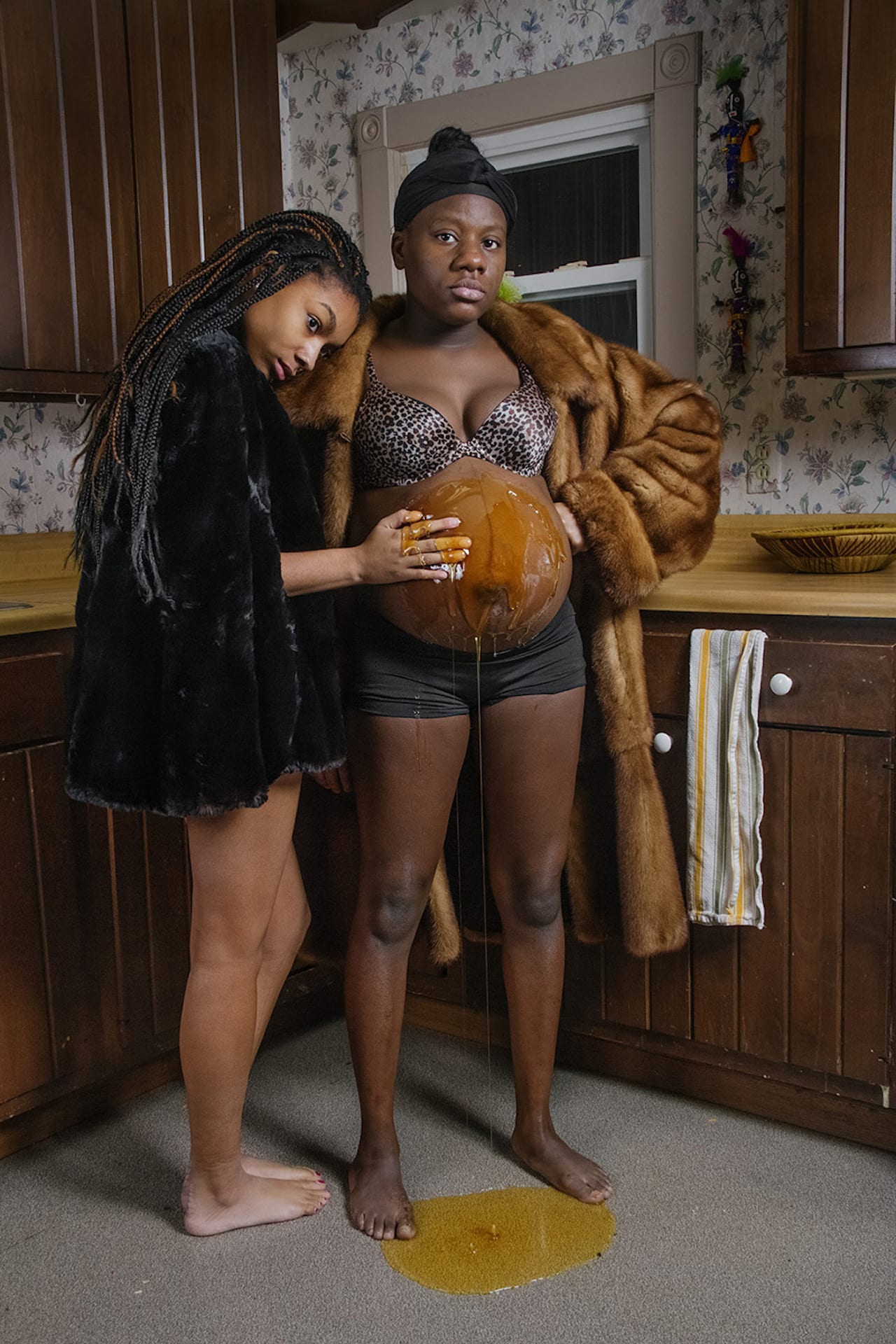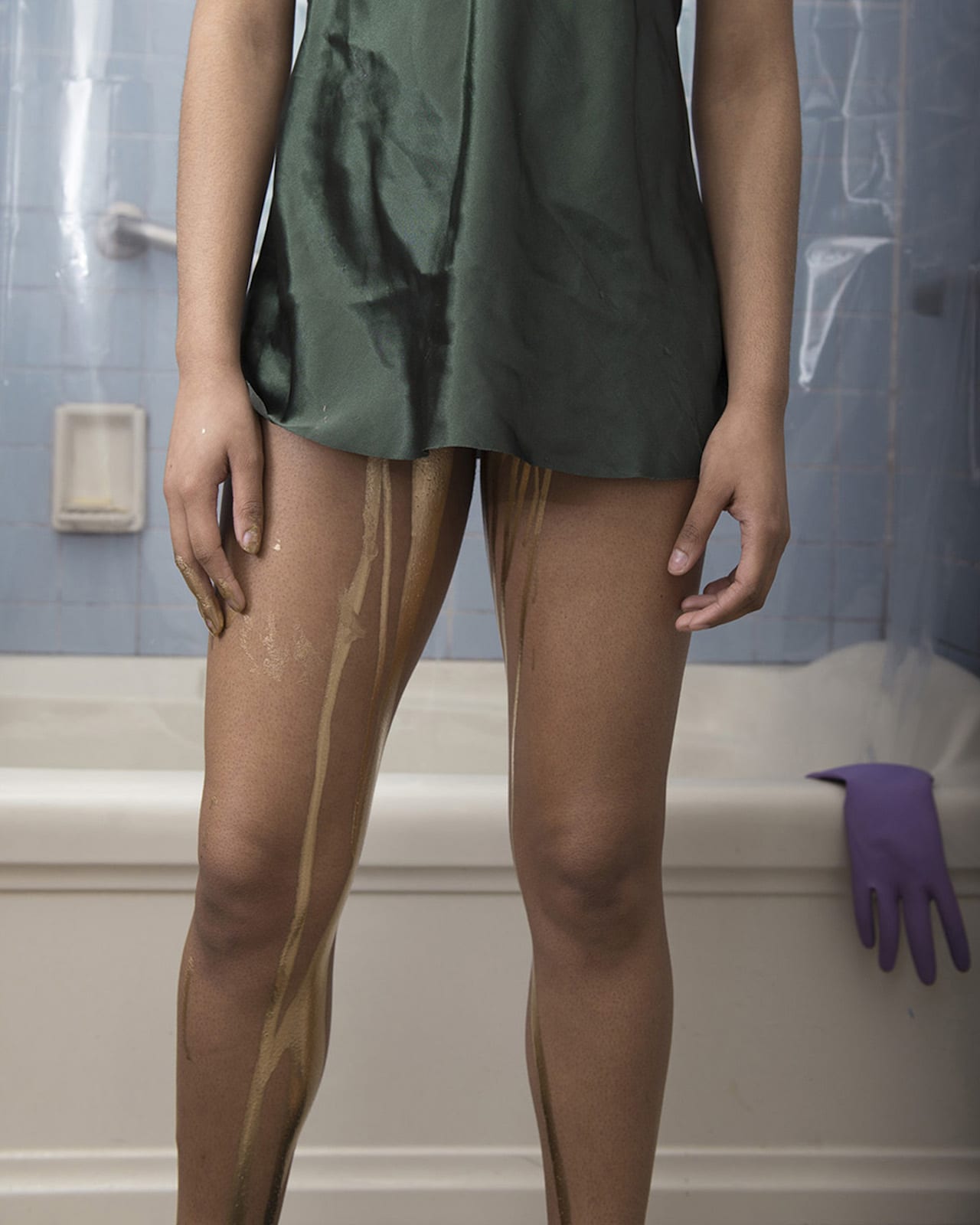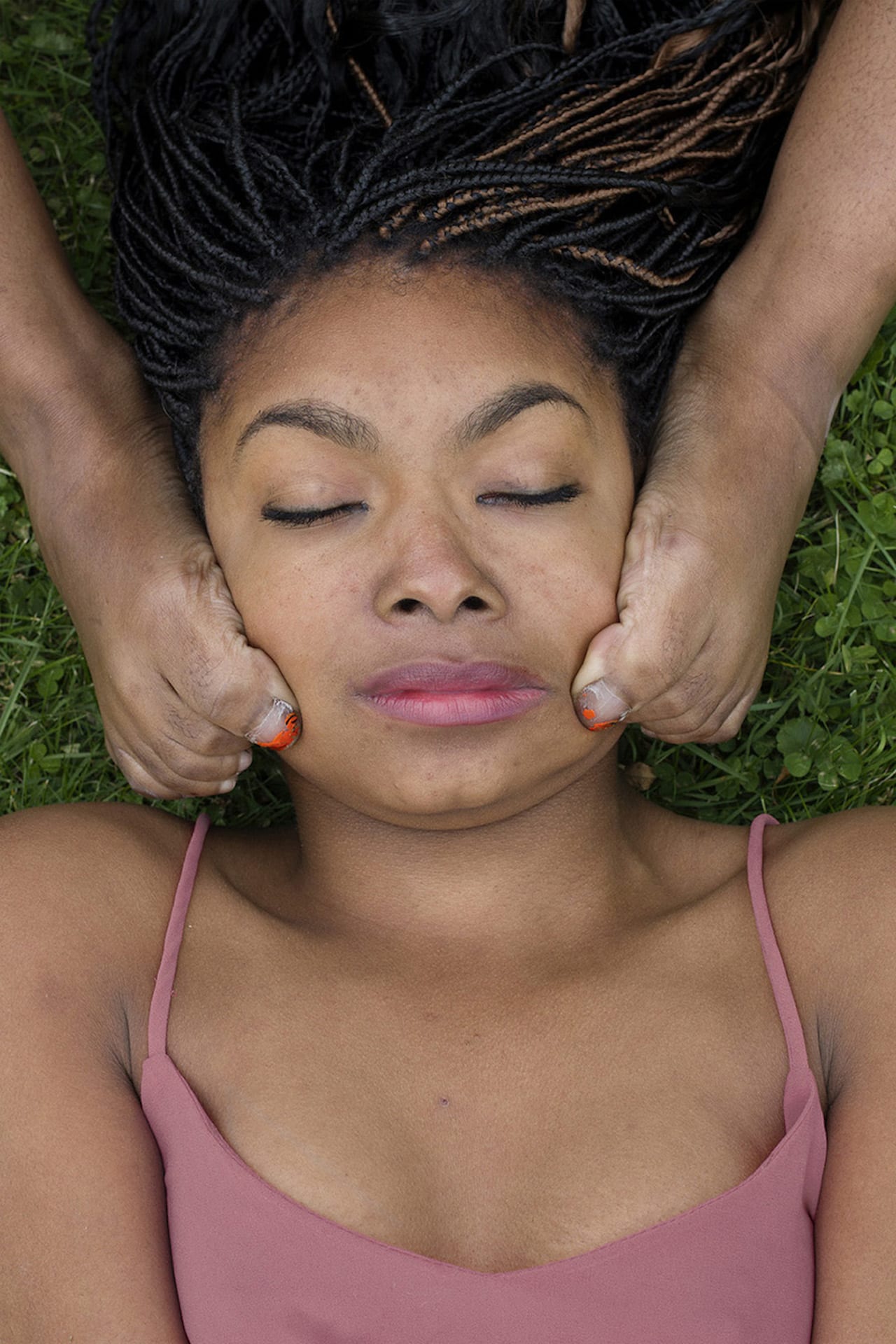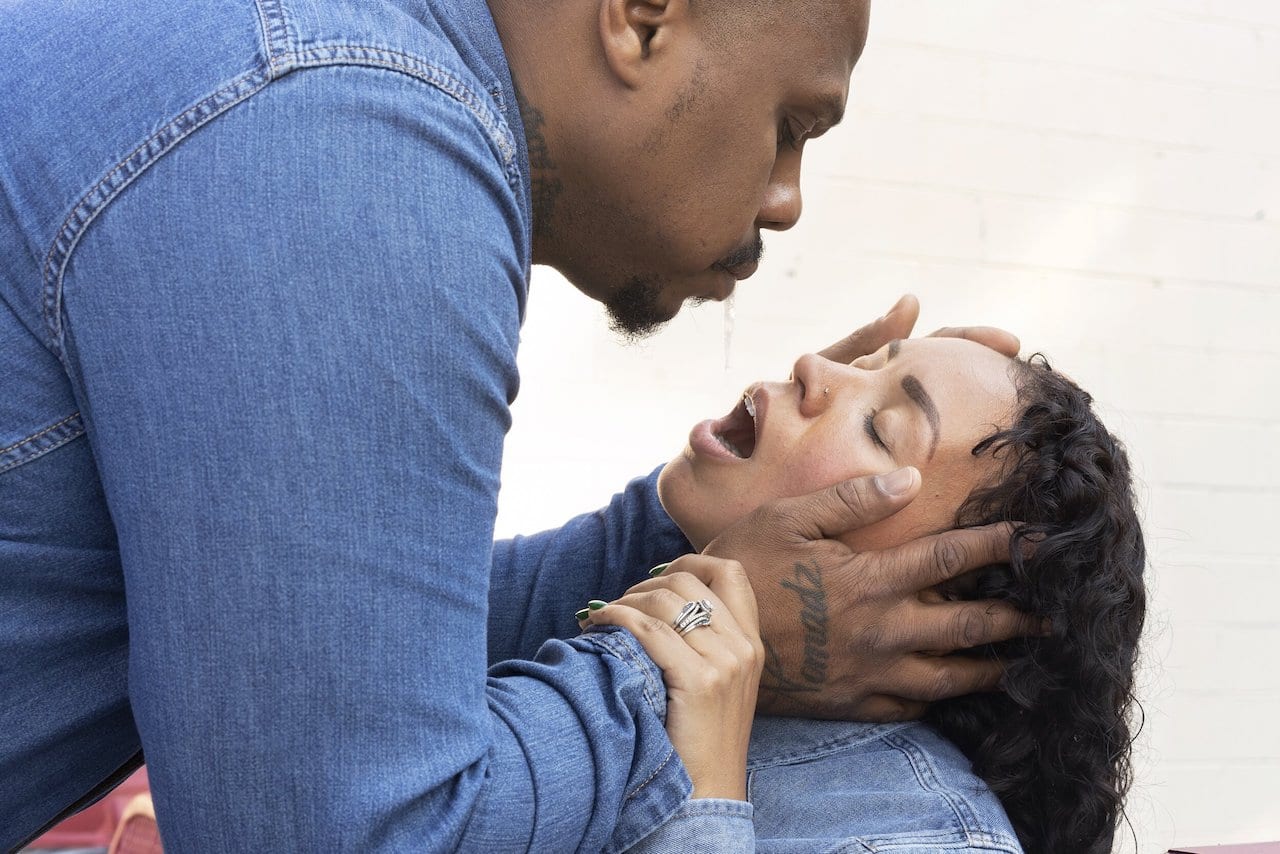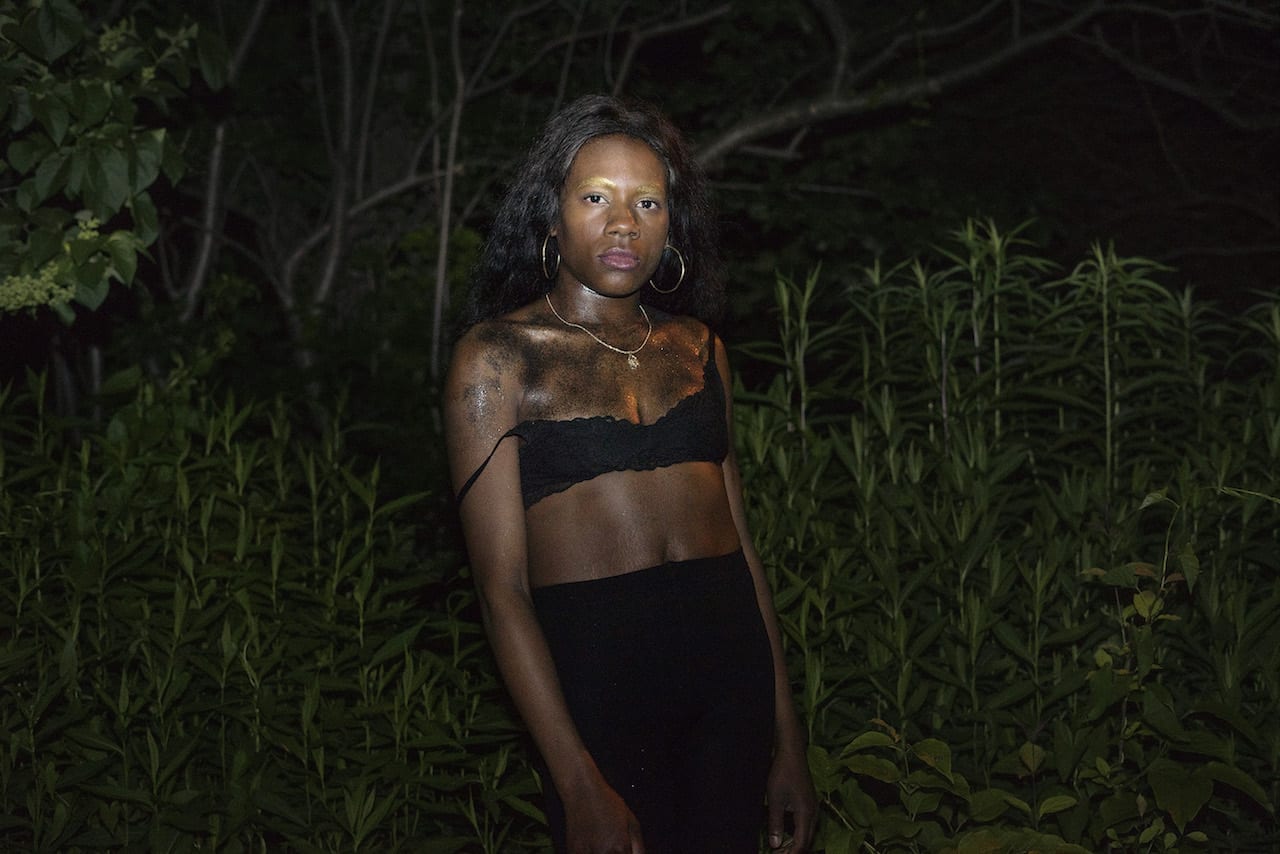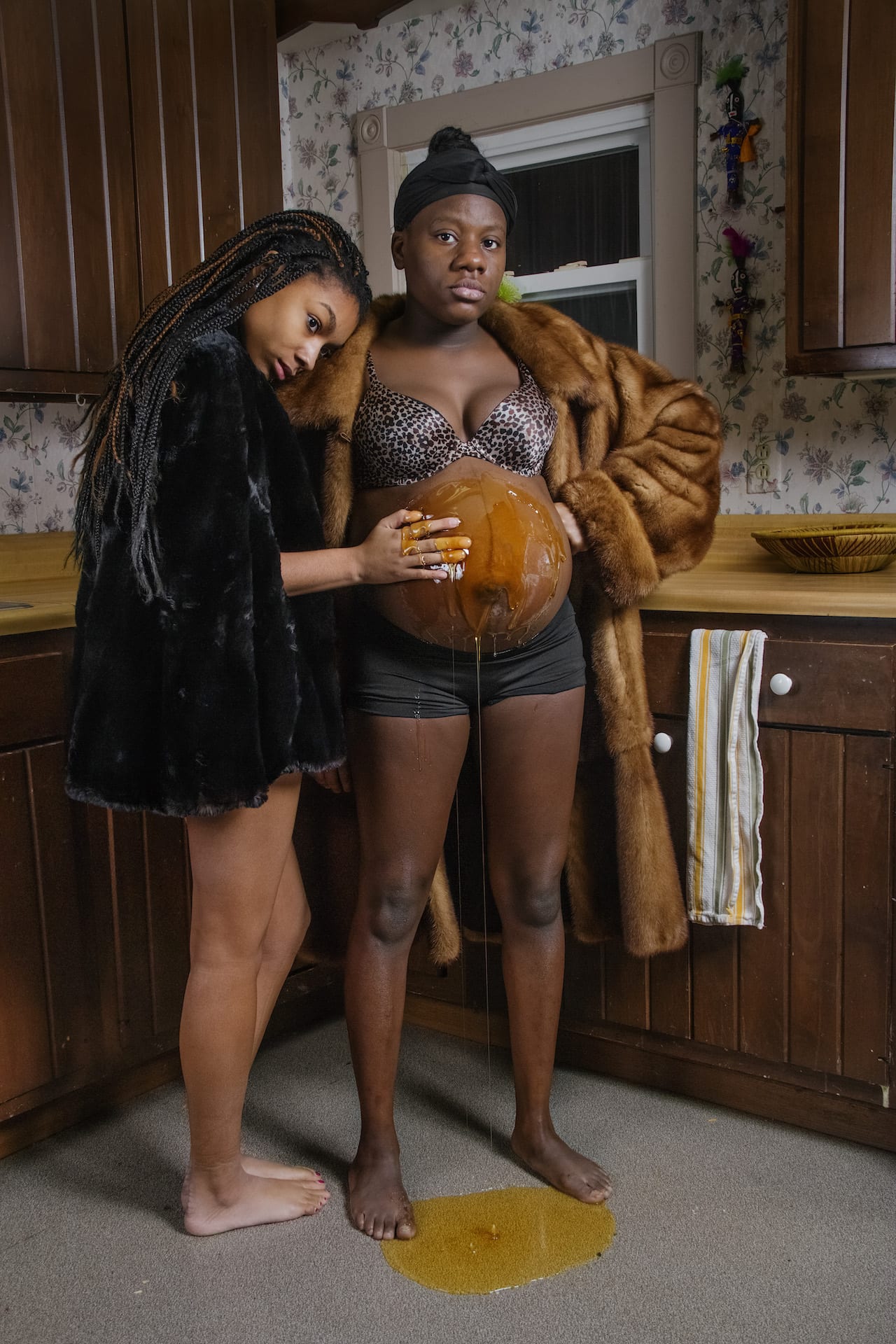In The Girls Who Spun Gold, props function as extensions of the girls’ bodies, costumes become markers of identity, and gestures reveal the performance and confrontation involved in learning to define oneself within preconceived constructs of gender and race. Blas’ subjects often straddle a blurred line between childhood and adulthood: her earliest project, When Time Stands Still, documents the intricate bond between her two nieces as they grow. Whatever You Like unfolds the ways that young women of colour learn to reclaim themselves for their own pleasure. To behold the latter project — the girls touching themselves, taking up space, observing their reflections — is to witness them unseeing themselves through the eyes of others. Unlearning their bodies as objects to please men.
“It’s such a confusing time,” Blas remarks, considering her own adolescence. “It’s full of contradictions. There’s this thin line when your body changes, and suddenly you have to wear a bra, you shouldn’t sit on a grown man’s lap, older women can be threatened by you. These are all things you have to learn outside of yourself.” Above anything, during these years, it was Blas’s relationships with other girls that propped her up — a dynamic dealt with inimitably in her art. “We live in a culture where we’re told that women don’t support women, or we’re always in competition with each other,” she says. “For attention from a man, or who’s prettier. But I’ve always had such strong relationships with other women.”
Indeed, Blas demonstrates an enchanting ability to capture the stirring intimacy of these relationships. Namely, she explores bonds between photographer and subject, or subject and subject, while the viewer is often consigned to the periphery. “It’s about the interior, and the individuals,” she says. “Like you don’t even matter as the viewer.”
In The Girls Who Spun Gold, one portrait shows a girl lying tautly on a bed of grass; her eyes are closed, negating the viewer, as two feet clamp tightly around her face. In Sometimes Your Edges are Rough and I Wrap You in Rainbows — another ongoing project — Blas’ husband holds her face as he spits into her mouth. “When my mom saw that photo,” Blas recounts, “she called me and she was crying, like, ‘I don’t understand. How is that powerful?’” But the image speaks to all we are willing to give and share as humans. “It’s just another notion of intimacy to me. Like the feet on the face,” she says. “And intimacy isn’t just a tightly-wrapped, beautiful process. It’s painful. It’s a struggle. It’s hard to trust people.”

